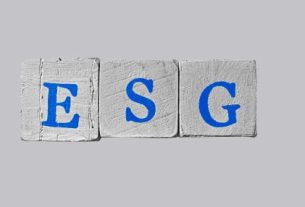Feike Dijkstra discusses his recent article: Continuous remobilization from belowground provides more than half of all carbon and nitrogen in regrowing shoots after grassland defoliation. Find out more about how C and N remobilization have important consequences for how grasslands respond to grazing intensity and global change factors:
🌱 What we found
When aboveground tissue is removed in grasslands because of grazing, these grasslands no longer have the capacity to photosynthesise. They only way for new shoots to form, and for photosynthesis to kick in again, is by transferring or remobilising organic compounds stored in roots. Until now, it was thought that this remobilisation from roots is short-lived and stops once plants have the capacity to photosynthesise again. We used a novel carbon stable isotope method to show that remobilisation of carbon from roots after defoliating plants from a grassland in Australia continues well into fully grown leaves. Indeed, carbon that was previously stored in roots contributed up to 52% of the carbon in fully grown leaves after 30 days of growth. This large amount of carbon remobilisation was even surpassed by remobilisation of nitrogen from roots, a nutrient that is often in limited supply in most grasslands, with up to 89% of nitrogen in fully regrown leaves derived from roots instead of direct uptake from the soil.
🔎 How we did it
To quantify the remobilisation of carbon and nitrogen stored in roots to regrowing shoots we relied on stable isotope methods. First, we collected intact plant-soil cores from a perennial grassland in New South Wales, Australia.

After removing the aboveground biomass of the cores by clipping, we let the plants regrow in a growth room that had carbon dioxide depleted in 13C. As such, any carbon that was photosynthesised after bringing cores into the growth chamber (new carbon) was more depleted in 13C compared to the carbon that was stored in roots before the cores went into the growth chamber (old carbon). By measuring the carbon isotopic signature in regrowing leaves, we were then able to separate the old or root-transferred carbon from the newly photosynthesised carbon in leaves based on a two-pool linear mixing model. To quantify the remobilisation of nitrogen, we used a similar approach, but now we enriched the available nitrogen in the soil by injecting a solution containing 15N labelled ammonium and nitrate as soon as the cores entered the growth chamber.

Given that the nitrogen stored in roots before plants entered the growth chamber was not enriched in 15N, we were then able to separate nitrogen transferred from roots and nitrogen derived from soil uptake in regrowing leaves.
❓Why it matters
Roots of perennial grasses have a large reservoir of carbon and nitrogen that can provide half or more of the carbon and nitrogen in fully regrown shoots after defoliation. As such, roots function as a bank to support new shoot growth, and they continue to do this even after new leaves have fully formed. However, when plants are defoliated too frequently, then this reservoir of carbon and nitrogen in roots may be drained faster than plants can replenish it through photosynthesis and soil uptake. When more carbon and nitrogen is transferred from roots to shoots, then less will be available for root growth, thereby adversely affecting uptake of nutrients and water from the soil, which could spiral down into a negative feedback loop. This may be an important reason why intense grazing practices often result in grassland degradation. When large amounts of carbon and nitrogen (and potentially other nutrients) are transferred from roots to shoots and subsequently removed through grazing, then it is easy to see that this may also significantly reduce soil organic matter storage in the long-term. We advocate that remobilisation of carbon and nutrients from roots to shoots should play a more central role in future biogeochemical models predicting grassland production and long-term soil organic matter dynamics.
To take the message closer to home: next time you mow your lawn and rake the grass clippings and remove these, possibly for composting, remember that you may actually remove a large amount of carbon and nutrients previously stored in roots.
Feike Dijkstra, University of Sydney, Australia
Read the full article online: Continuous remobilization from belowground provides more than half of all carbon and nitrogen in regrowing shoots after grassland defoliation
